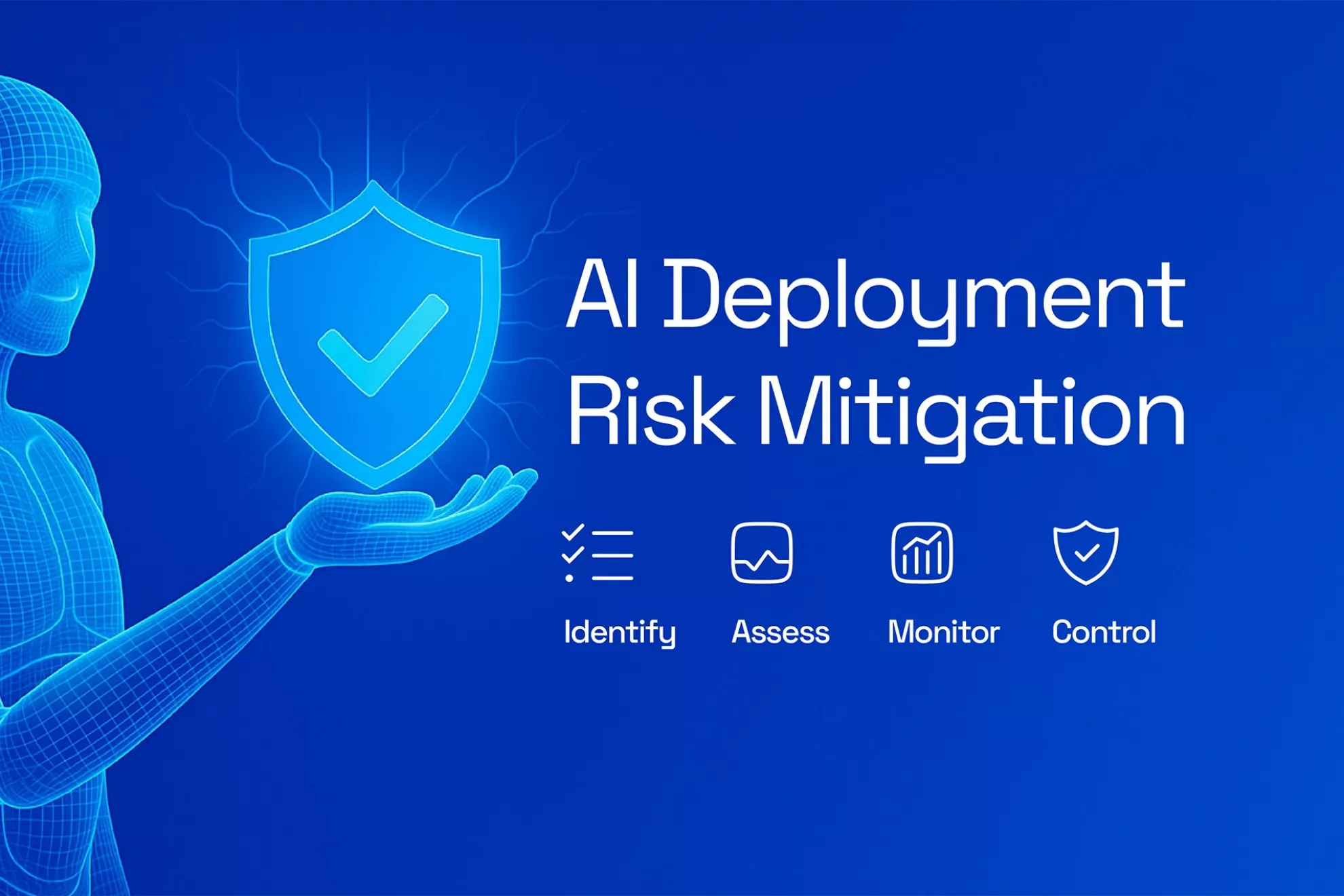
Walk into any coffee shop or browse online, and you see individuals enthusiastically experimenting with AI, writing emails, generating images, and summarizing documents. AI adoption among individuals is soaring.
Yet, step into many companies, and the pace often feels more cautious. While pilots run and strategies are discussed, widespread, transformative AI integration can seem slower.
Why the difference?
Individuals operate largely within their own "sandbox," where mistakes primarily impact only them. Companies, however, have complex, interconnected systems, established processes, reputations, and regulatory requirements. For a company, AI adoption comes with a significant perceived risk: the fear of messing things up, disrupting operations, generating incorrect or biased outputs at scale, or losing control. This fear, while understandable, becomes a major barrier to unlocking AI's potential.
So, how can companies move beyond this hesitation and confidently adopt AI? The answer lies in proactive and intelligent risk management.
To effectively manage the risks of AI, we first need a fundamental understanding of how many of these powerful new systems work. Unlike traditional software that follows rigid, deterministic instructions (algorithms), much of the cutting-edge AI today, particularly in areas like natural language processing or complex decision-making, is statistical in nature.
Statistics vs Guaranteed Solutions
Think of AI as less like a calculator that always produces the exact same output for the same input (2 + 2 = 4, always). Instead, think of it more like a highly sophisticated pattern predictor. Based on the data it was trained on, it predicts the most likely next word, the most probable image feature, or the most statistically relevant outcome. It's incredibly powerful, but its outputs can have variability and are not always 100% guaranteed or predictable in the way a simple algorithm is. This inherent variability is the root of many AI risks.
Managing this statistical uncertainty is key to successful company-wide AI adoption. It means accepting that the system might occasionally produce an undesirable output and building safeguards to identify, contain, or correct it.
In my experience building and deploying AI systems since 2019, working on everything from Computer Vision for drones to complex LLM applications in the cloud, this has been a consistent theme. While the tools and techniques have become more accessible, the core challenge remains managing the inherent variability and potential risks in these statistical systems. Success isn't just about building a powerful model; it's about building a reliable, safe, and manageable system around it. This requires a deliberate focus on risk mitigation.
Some Options
How is this done? We'll explore this in detail in this series, but here are a few glimpses of the principles involved:
Independent Verification: Just like in a project where you have separate testing teams, AI systems or workflows can be designed so that critical, potentially error-prone outputs are automatically checked by an independent process (or flagged for human review) if the result is easy to verify.
Diverse Approaches (The Ensemble Concept): Instead of relying on the prediction of just one model, you can use multiple different models and combine their results. If one model makes an error, others can outvote or correct it, leading to a much more reliable overall outcome.
Layered Simple Rules: Sometimes, you put simple, deterministic rules on top of complex AI. For example, a sophisticated AI chatbot might have a final, simple check before sending a message to ensure it doesn't contain forbidden words or mention competitors, regardless of what the complex AI generated.
These techniques, common in building resilient AI systems, mirror the strategies needed for managing AI projects. They are all forms of risk mitigation – building layers of defense against potential failures stemming from the technology's probabilistic nature.
This is just the beginning of understanding how framing AI adoption through the lens of risk management is not a barrier, but the essential enabler for companies.
In the next episode, we'll dive deeper into identifying specific types of risks inherent in AI projects and start building our toolkit for managing them.
This article is part of a series called From Fear to Adoption: Managing AI Risks. This series explores how proactive risk management enables companies to move past hesitation and confidently adopt Artificial Intelligence.
Author: Vlad Ilie - Lead AI Engineer



